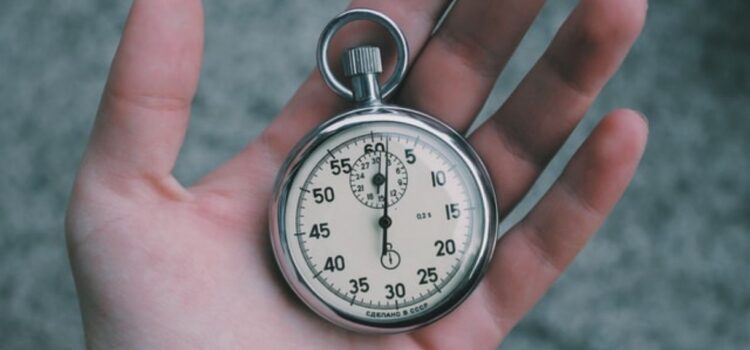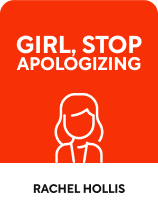

This article is an excerpt from the Shortform book guide to "Girl, Stop Apologizing" by Rachel Hollis. Shortform has the world's best summaries and analyses of books you should be reading.
Like this article? Sign up for a free trial here .
Do you ever feel like there just isn’t enough time in the day to get things done? How can you get the most out of the time that you do have?
One of the biggest excuses for not chasing your dreams is “I don’t have time.” In her book Girl, Stop Apologizing, Rachel Hollis explains that this isn’t a valid excuse for not working towards your goals. She has four children and still managed to build a business, become a motivational speaker, and become a bestselling author—and she shares her tips.
Here are Rachel Hollis’s five tips for how to manage your time efficiently.
Effective Time Management
In her book Girl, Stop Apologizing, Rachel Hollis explains how to develop the skill to defeat the excuse of “not having enough time.” Hollis advocates learning how to manage your time efficiently to get the most out of it. She recommends you take the following five actions:
1. List your desired outcomes rather than your to-dos. To-do lists make us feel good because we get a sense of satisfaction with each item we cross off. However, Hollis points out that it isn’t a true indication of how much closer you are to your goal and it can be a time-waster. Instead, she recommends you write down the outcome you desire. For example, rather than writing “apply for five jobs,” try writing “secure a job interview.” Your brain will find the quickest way to make that outcome happen, and you will move closer to your goal.
(Shortform note: According to Forbes, to-do lists and outcome lists are both valuable. Outcome lists ensure that the work you’re doing is productive and moves you closer to your goal. However, to-do lists can still be valuable, particularly when you need to list out specific steps to achieve an outcome. For example, if your outcome is “complete chapter three of my book,” you might have a to-do list that says “outline chapter,” “find two references,” and so on.)
2. Constantly evaluate your efficiency. Hollis advises taking a look at your outcomes list and asking if there’s a better or quicker way to get the result you’re aiming for. This isn’t to say that success comes quickly or easily, but there are often items on our list that don’t need to take as much time as we believe…or that don’t need to be on the list at all. Evaluate whether all of the outcomes on your list are necessary or if there are any you can let go.
(Shortform note: An area of effectiveness that isn’t addressed here is quality of work. To be effective is to get a lot of bang for your buck. Said another way, you should be aiming to achieve the highest level of excellence with the least amount of effort. Every successful enterprise has a mix of quality and efficiency, and when put together, this is effectiveness. As you work, evaluate how your speed is affecting the quality of your output.)
3. Use whatever helps you focus. Your working environment will often be out of your control, especially if you’re working on your dream in addition to other responsibilities and have to use whatever time and place are available. Hollis recommends finding something that you can control that helps you work at your best, and using that consistently. For some people, this might be a cup of coffee, a certain type of music, comfortable clothing, or a scent. Whatever this is for you, she says to use it consistently when you work. When you put on that song, or take that sip of tea, your body and brain will recognize the cue and snap into work mode.
(Shortform note: Cal Newport offers several strategies for increasing your focus to be more effective in his book, Deep Work. One strategy that he recommends is training your “focus muscles” by allowing yourself to be bored in situations where you would normally distract yourself. For example, if you’re waiting in line at the DMV, you might naturally reach for your phone. Instead, resist the urge and allow the boredom to happen. This is great focus training for your brain because you will develop increased control and discipline over your thoughts in the same way that an athlete controls their physical movements.)
4. Avoid the things that distract you. This may seem obvious, yet people often expend mental energy trying to “power through” their biggest distractions. Hollis says that a more effective technique is to avoid the distraction altogether. Set yourself up for success. For example, if noise is a distraction for you, don’t try to work in a coffee shop.
(Shortform note: In Deep Work, Newport points out that our tools of productivity often become distractions instead. For example, if part of your work includes promoting yourself on social media, you might find yourself scrolling through social media every time you log in to work. While it seems harmless, a minute here and there adds up over the course of a day. One solution is to set aside “active hours” and “non-active hours” for use on social media. For example, you might check in with Instagram twice a day at designated times.)
5. Be willing to adjust your course. Hollis recommends checking in with yourself once a week. Ask yourself if you’re on track, and if you aren’t, then adjust your plans. Stay steadfast in your “why” but be flexible in your “how.”
(Shortform note: Flexibility is an important tool of efficiency because if you allow yourself to shift gears from time to time, you might discover quicker ways to get to your end goal. For example, let’s say your desired outcome is to get a new job and you schedule some job search activities throughout the week. On Monday, a friend calls and tells you about a job fair with some promising leads. If you allow yourself to adjust course and go to the job fair instead of your previously scheduled activity, you might arrive at your outcome sooner than intended.)

———End of Preview———
Like what you just read? Read the rest of the world's best book summary and analysis of Rachel Hollis's "Girl, Stop Apologizing" at Shortform .
Here's what you'll find in our full Girl, Stop Apologizing summary :
- Rachel Hollis's lessons she learned while building a multimillion-dollar company
- Why "having it all" isn't something you should aspire to
- Why women need to stop trying to fit society's idea of a "good woman"






